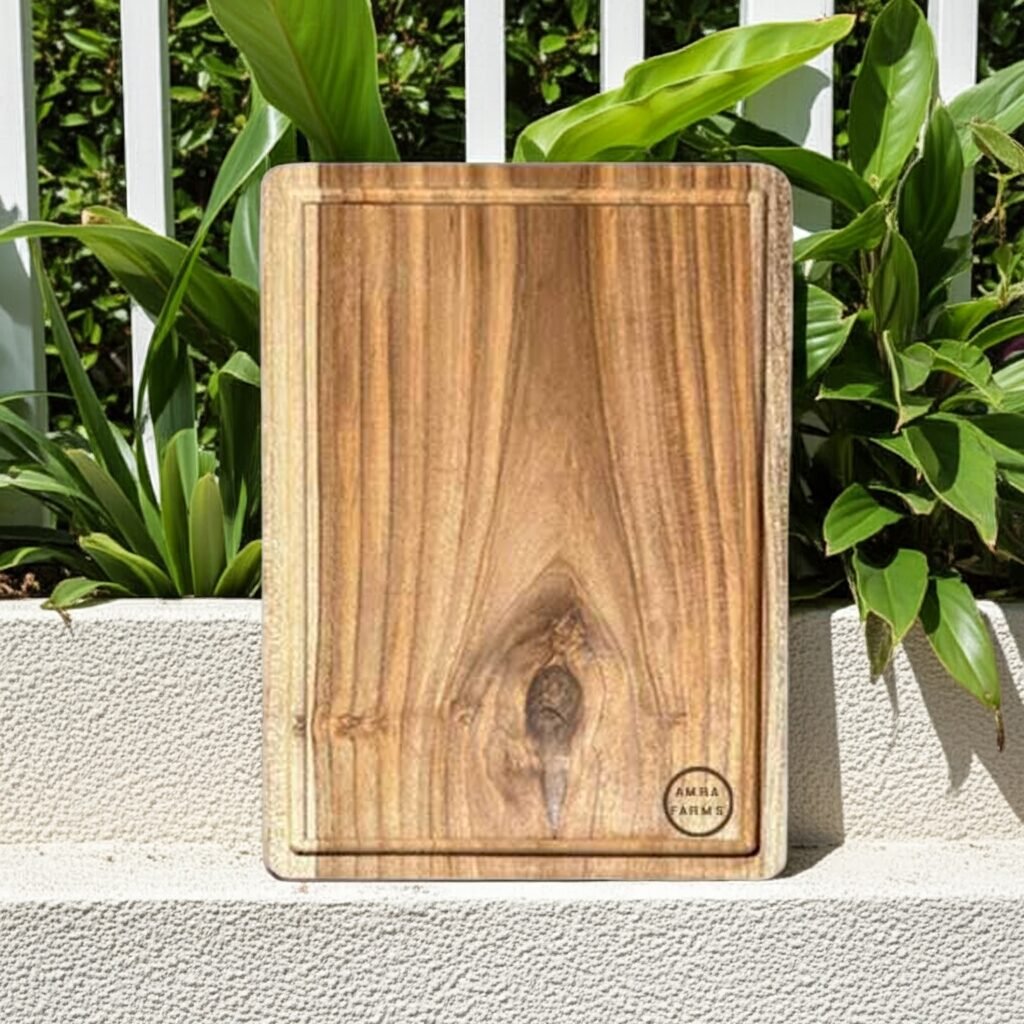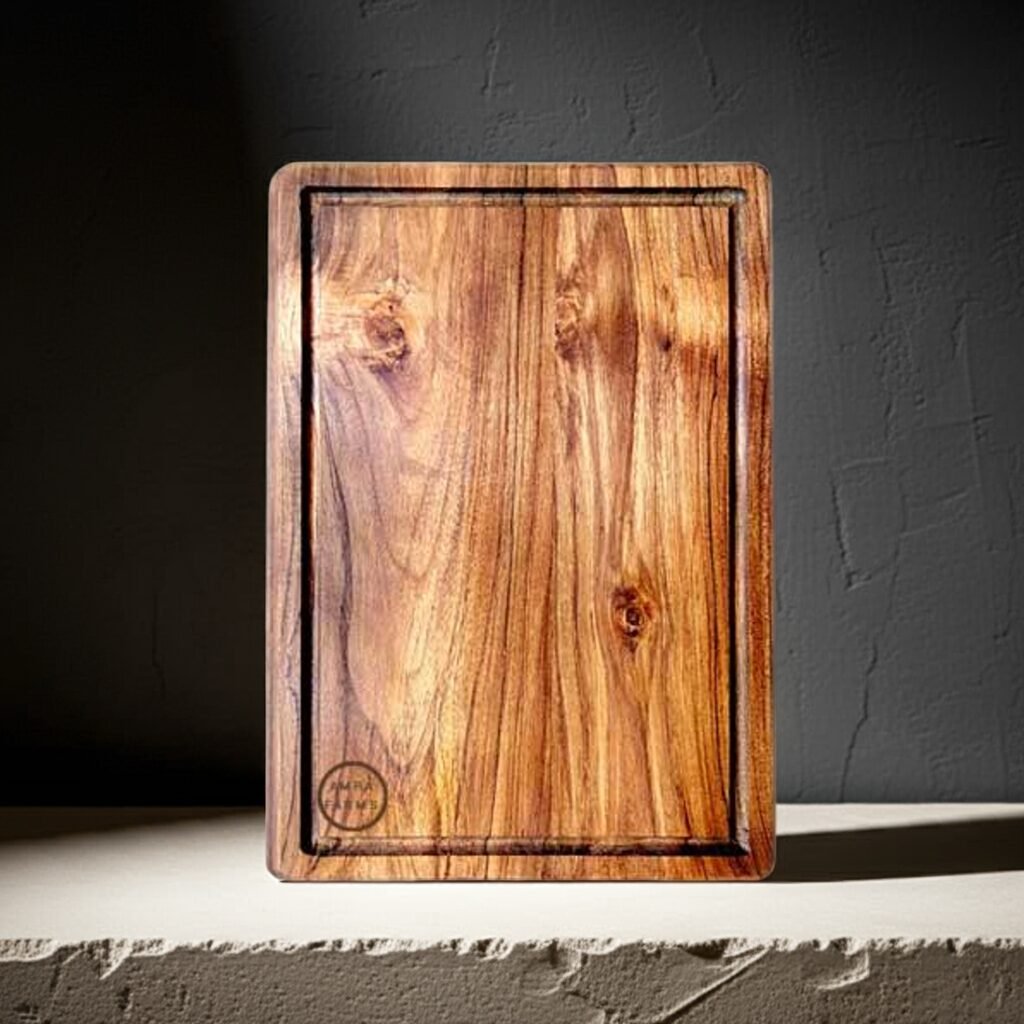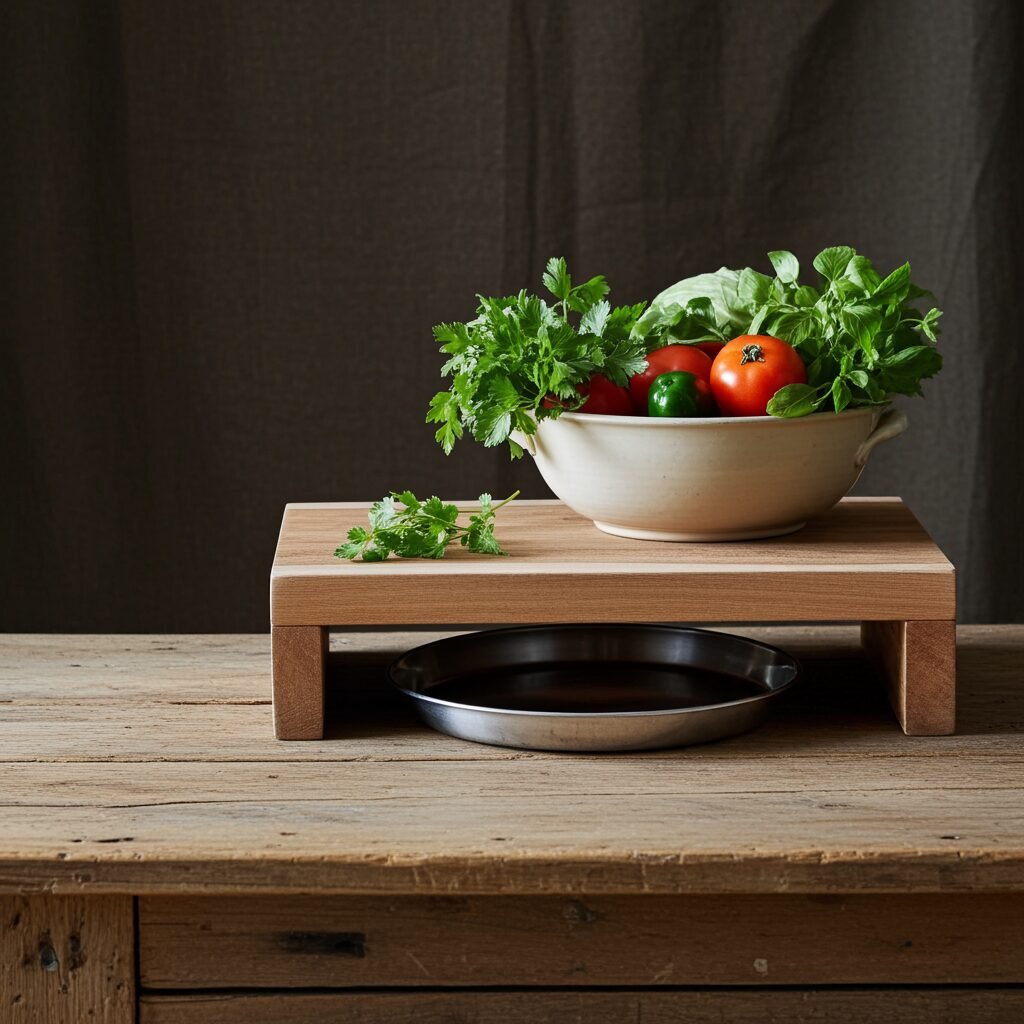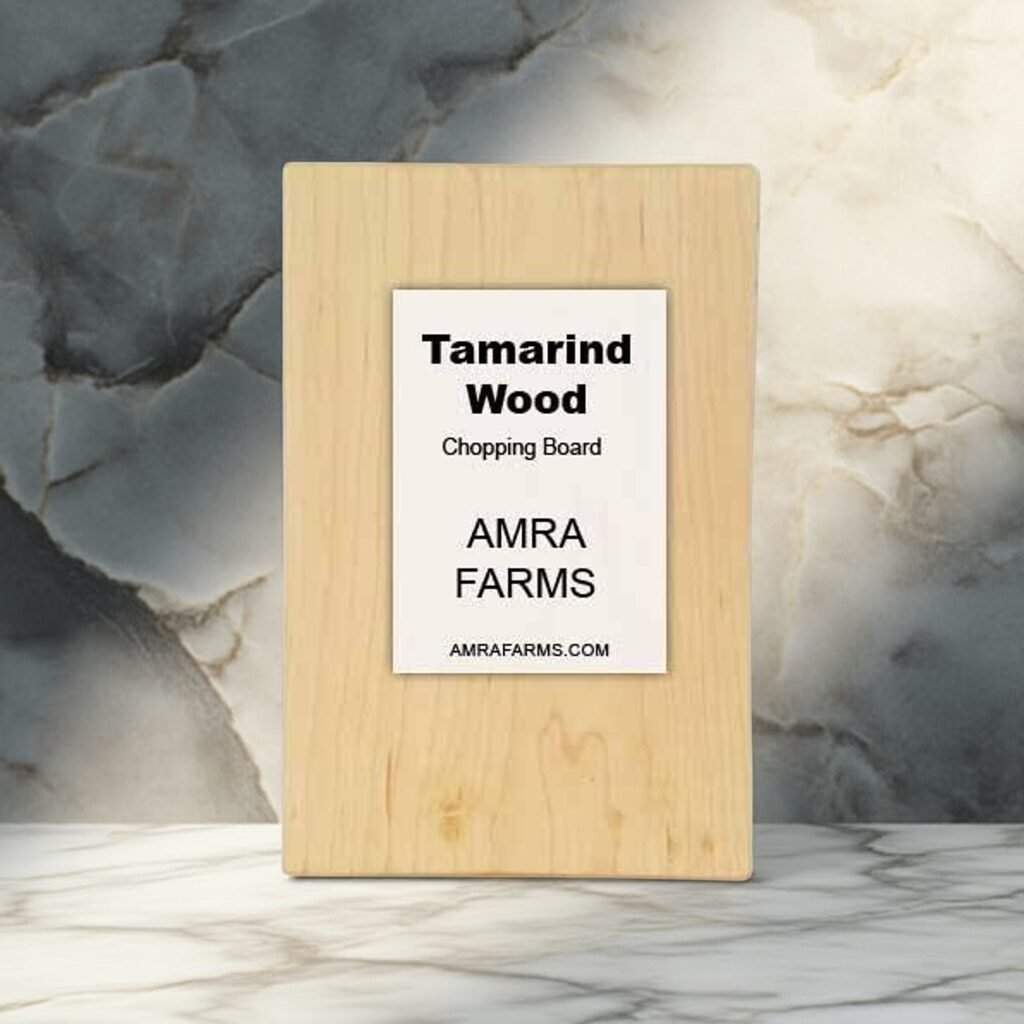Your cart is currently empty!
Are Imported Wooden Chopping Boards Overrated? Why Indian Woods Perform Better in Local Conditions
We are all drawn towards premium products when we purchase from a store or online. The charm of imported wooden chopping boards is natural. They are marketed as luxury kitchen essentials, crafted from exotic wood like maple, walnut or beech. But have you wondered if these imported wooden chopping boards are really worth the premium price and if it’s suitable for Indian kitchens? The reality is surprising. Indian hardwood chopping boards made from teak, tamarind, mango or neem are often more durable and sustainable for local conditions.






The truth about imported wooden chopping boards in Indian kitchens
The wood which is imported often comes from colder countries. Beech, walnut and maple are commonly grown in high altitude low temperature areas. India, on the other hand, is tropical or hot. The conditions are highly humid and the temperature fluctuation is high. The high humidity and temperature fluctuations cause the imported wood to warp and crack easily. Even the best quality wood often lasts only half of what Indian wood can endure. Not that these wooden boards are not suitable at all. Conditions in hilly areas and where temperature is always below 25 degrees will find these wooden boards perfect. But when it comes to most of the other areas in India, these boards really fall short.
Frequent washing and water exposure leads to swelling of the board and splitting. Heavier usage, especially in households where chopping vegetables, fruits and meat happens more than once a day, will require a wood with high endurance. Most of the imported wood will fall short in performance in Indian kitchens as they are designed for a more western lifestyle where cooking happens occasionally and, when and if it does happen regularly, is usually very light with minimal use of the chopping boards.
Why Indian Hardwood Chopping Boards Are Better Suited for Local Conditions
Indian woods are naturally resistant to humidity and heat
Hardwood like teak and tamarind is grown in India and they are well acclimated to the climatic conditions in India. Teak wood cutting boards and tamarind wood chopping boards are high in natural oil content making them stable in India’s hot and humid climatic conditions. They don’t easily warp, crack or shrink compared to wood that is imported. Some woods like cedar are known to have high oil content and are viable for Indian conditions. Wood like beech and maple are often not the best choice for wooden chopping boards in India.
Better durability for Indian cooking
Indian homes are known to cook food regularly. Most homes cook 3 different meals a day while some cook twice. Compared to western lifestyle, Indian cooking is far more frequent. Also, Indian cooking involves frequent washing, moist ingredients and heavier chopping compared to other cuisines. This requires a cutting board that is durable, tough and that which can endure. Teak wood, neem and tamarind are known to take a tough chopping and will not deteriorate easily.
Natural antibacterial properties
Wood like teak and neem are known for its natural antibacterial properties. Their high oil content and the compounds like tectoquinone, lapachol, and deoxylapachol are known to help keep the boards clean. Wood like neem is traditionally used for centuries for its antibacterial properties. They are known to be safer for food preparations and reduce the risk of microbial growth without chemical treatment.
Cost effective, eco-friendly and readily available
Indian wooden chopping boards are significantly more affordable. They come at a fraction of a price compared to those purchased abroad. A teak wood board, for instance, purchased from Boos Block would cost you $100 to $150 and the same board is available in India for less than 2000 Rs which is less than $40. A Teakhaus board that costs $139 is available in India for the price of Rs.1500. Most of the wood that is available in India is durable and of a better quality. The price you pay for the brand is significant when it comes to international chopping boards.
Popular Indian wood chopping boards
Mango wood chopping board – budget friendly, lightweight
Mango wood chopping boards are durable and have a beautiful natural grain. Perfect for those who are looking for a cheap board that is below 1000 Rs and that will last 3-4 years, mango wood requires a bit of additional care and maintenance. As a sustainable option, mango wood chopping boards are easily available and eco-friendly.
Tamarind wood chopping board – trusted, time-tested and traditional
Tamarind wood chopping boards are dense and heavy. They are ideal for those who prefer a single block wooden chopping board for heavy chopping. They are tough and don’t dent easily. Being heavy, they are great for meat and heavy chopping. Also, one of the few affordable woods for chopping boards, they are antibacterial, easy to maintain and best for regular use.
Neem wood chopping board – antibacterial
Neem is known for its naturally antibacterial and eco-friendly features. An excellent choice for households that are concerned about hygiene, neem wood is considered medicinal and recommended by ayurvedic practices. Neem woods are rich in oil and they do not warp or crack easily.
Teak wood chopping board – elegant, tough and antibacterial
a Teak wood Chopping board is considered the best wooden chopping board for its rich features. They are tough, durable, beautiful, antibacterial, rich in oil content, scratch-resistant and moisture repellent. They are also a bit expensive compared to all other woods. Considered a luxury wood, a teak wood chopping board, no matter what shape or size, adds a touch of beauty to your kitchen.
Categories
Products
- Buy Wooden Vegetable Cutting Boards Online
- Wooden Kitchen Accessories Tools
- Buy Butcher Block & Meat Cutting Boards Online
- Buy Premium Edge Grain Single Block Wooden Chopping Boards Online
- Buy The Best Teak Wood Chopping Boards Online In India
- Buy Wooden Cutting Boards With Handle For Kitchen
- Mango Wood Chopping Boards
- Single Block Chopping Boards
- Tamarind Wood Chopping Boards
- Wooden Platter Boards , Pizza Platters & Charcuterie Boards
Tamarind Wood Cutting Board Teak Wood Cutting board
Recent Posts
- Unique Wooden Chopping Boards with Medicinal Benefits
- Exotic Woods of India and Its Uses
- Best Uses of Teak Wood: Common and Unique Applications That Make It the King of Hardwoods
- What to look for when purchasing a teak wood cutting board and how to identify teak wood
- Wooden chopping boards that naturally resist fungus/mould growth
